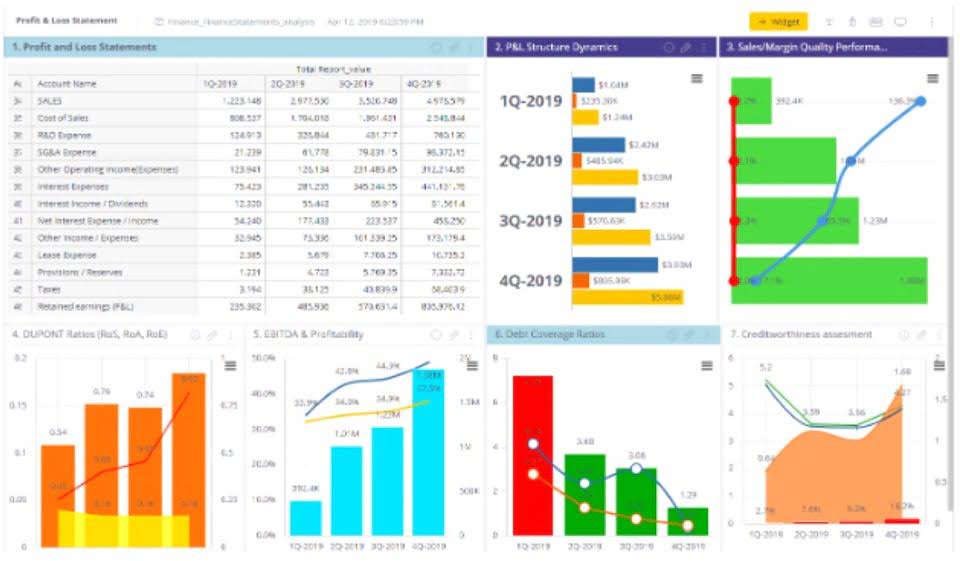
However, negative working capital could also be a sign of worsening liquidity caused by the mismanagement of cash (e.g. upcoming supplier payments, inability to collect credit purchases, slow inventory turnover). For instance, suppose a company’s accounts receivables (A/R) balance has increased YoY, while its accounts payable (A/P) balance has increased under the same time span. It is used in cash flow analysis, particularly in the cash flow from operating activities in the cash flow statement.
- The Change in Working Capital tells you if the company’s Cash Flow is likely to be greater than or less than the company’s Net Income, and how much of a difference there will be.
- These items can be quickly converted into cash or used up within the next year.
- If a company collects $30,000 of its accounts receivable, there is no change in working capital since the current asset Cash increased, and another current asset Accounts Receivable decreased.
- However, it is a very complex process, where the change in net working capital is more in case the company is bigger, covering a wider market and wide range of products and services.
- Change in Working capital cash flow means an actual change in value year over year, i.e., the change in current assets minus the change in current liabilities.
- From Year 0 to Year 2, the company’s NWC reduced from $10 million to $6 million, reflecting less liquidity (and more credit risk).
How Working Capital Impacts Cash Flow
Therefore, companies needing extra capital or using working capital inefficiently can boost cash flow by negotiating better terms with suppliers and customers. This 16% shows that the company is increasing its Net Working Capital Ratio, which means it’s putting more of its money into things that can be quickly turned into cash. This is a good sign for the company because it is trying to keep its money accessible and ready for use. In this blog, we will dive into net working capital, learn how to calculate it correctly, and see why it’s crucial for a company’s financial well-being. Stronger growth calls for greater investment in accounts receivable and inventory, which uses up cash. This, in turn, can lead to major changes in working capital from one month to the next.
How to Interpret Negative Net Working Capital

Thus, both are equally important while evaluating the company’s financial condition. Shaun Conrad is a Certified Public Accountant and CPA exam expert with a passion for teaching. After almost a decade of experience in public accounting, he created MyAccountingCourse.com to help people learn accounting & finance, pass the CPA exam, and start their career. To reiterate, a positive NWC value is perceived favorably, whereas a negative NWC presents a potential risk of near-term insolvency.
What Is Change in Net Working Capital?

It reflects the fluctuations in a company’s short-term assets and liabilities. It shows how efficiently a company manages its current resources, such as cash, inventory, and accounts payable. Positive changes indicate improved liquidity, while negative changes may suggest financial strain. Conversely, negative working capital occurs if a company’s operating liabilities outpace the growth in operating assets. This situation is often temporary and arises when a business makes significant investments, such as purchasing additional stock, new products, or equipment. A business has positive working capital when it currently has more current assets than current liabilities.

A company’s collection policy is a written document that includes the protocol for tackling owed debts. If you’re seeking to increase liquidity, a stricter collection policy could help. Cash comes in sooner (and total accounts receivable shrinks) when there is a short window within which customers can hold off on paying. A business has negative working capital when it currently has more liabilities than assets. This can be a temporary situation, such as when a company makes a large payment to a vendor. However, if working capital stays negative for an extended period, it can indicate that the company is struggling to make ends meet and may need to borrow money or take out a https://www.bookstime.com/ working capital loan.
Working Capital: Formula, Components, and Limitations
Thus, it’s appropriate to include it in with the other obligations that must be met in the next 12 months. Therefore, as of March 2024, Microsoft’s working capital metric was approximately $28.5 billion. If Microsoft were to liquidate all short-term assets and what is change in net working capital extinguish all short-term debts, it would have almost $30 billion remaining cash.

Part 6: Wait, Why Don’t the Cash Flow Statement and Balance Sheet Figures Match?!!
The textbook definition of working capital is defined as current assets minus current liabilities. The rationale for subtracting the current period NWC from the prior period NWC, instead of the other way around, is to understand the impact on free cash flow (FCF) in the given https://www.facebook.com/BooksTimeInc/ period. Understanding the factors driving changes in working capital is essential for evaluating a company’s financial health and operational efficiency. From shifts in market demand to variations in supplier terms, various internal and external factors can influence working capital dynamics. In addition to handling day-to-day expenses, net working capital provides the financial resources needed to seize growth opportunities.
- When you determine the cash flow that is available for investors, you must remove the portion that is invested in the business through working capital.
- Working capital, often referred to as the lifeblood of a business, represents the funds available for day-to-day operations.
- An increase in net working capital is subtracted from the net income while a decrease is added to it.
- Generally, yes, if a company’s current liabilities exceed its current assets.
- Lenders and investors will often look at both working capital and changes in working capital to assess a company’s financial health.
- The net working capital (NWC) metric is a measure of liquidity that helps determine whether a company can pay off its current liabilities with its current assets on hand.
As a general rule, the more current assets a company has on its balance sheet relative to its current liabilities, the lower its liquidity risk (and the better off it’ll be). The net working capital (NWC) metric is a measure of liquidity that helps determine whether a company can pay off its current liabilities with its current assets on hand. If a company obtains a long-term loan to replace a current liability, current liabilities will decrease but current assets do not change. ” There are three main ways the liquidity of the company can be improved year over year. Second, it can reduce the amount of carrying inventory by sending back unmarketable goods to suppliers.
